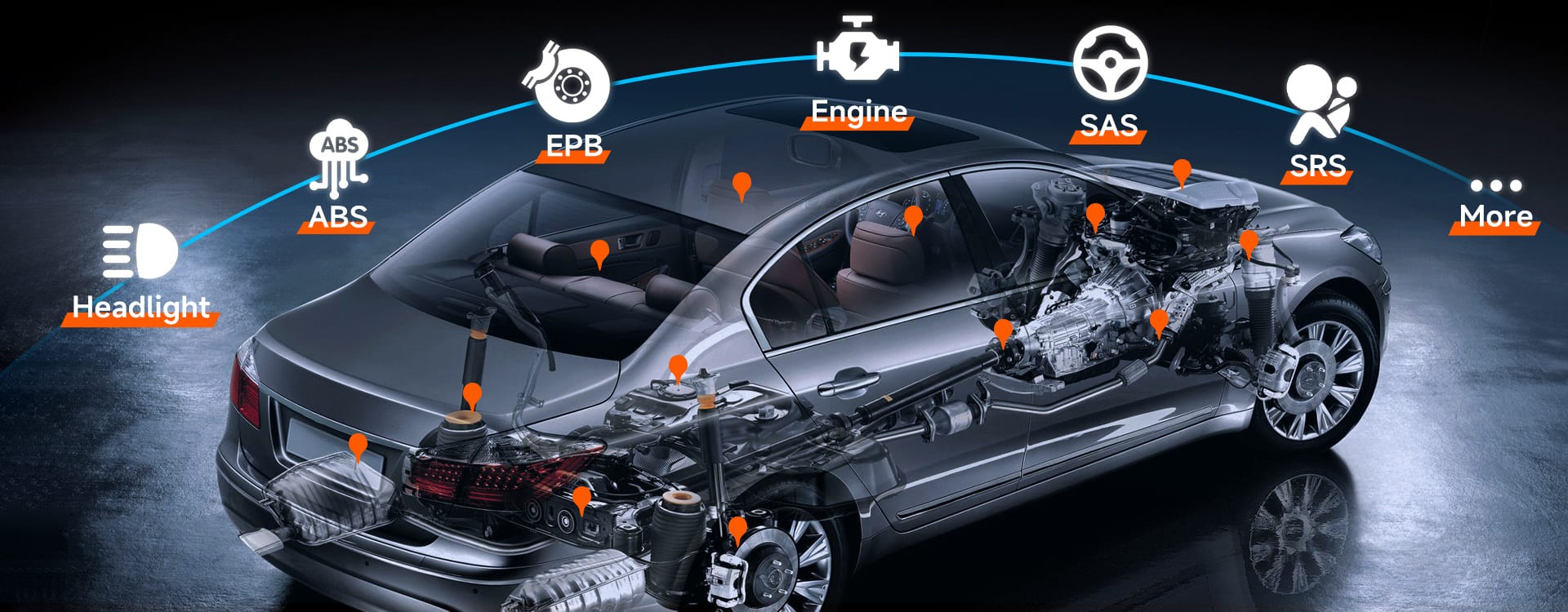The Evaporative Emission Control (EVAP) system is crucial for preventing fuel vapors from escaping into the atmosphere. A malfunctioning EVAP system can lead to failed emissions tests. Understanding the EVAP test within the OBD2 cycle is key to ensuring your vehicle passes inspection. This guide will cover the EVAP system, signs of malfunction, the reset process, the importance of drive cycles, and how OBD2 scanners can assist.
What is the EVAP System and its Role in OBD2?
The EVAP system captures fuel vapors from the fuel tank and stores them in a charcoal canister. During specific driving conditions, the OBD2 system initiates an EVAP test. This test checks for leaks or malfunctions within the system that could allow vapors to escape. A successful EVAP test is essential for passing an OBD2 emissions inspection.
Recognizing Signs of EVAP System Issues
Several indicators suggest a potential problem with your EVAP system, triggering a failed EVAP test in the OBD2 cycle:
- Check Engine Light (CEL): An illuminated CEL, often accompanied by a specific EVAP-related diagnostic trouble code (DTC), is a primary indicator.
- Poor Fuel Economy: A noticeable decrease in fuel efficiency could indicate a leak in the EVAP system, allowing fuel vapors to escape.
- Fuel Smell: A strong gasoline odor, particularly around the vehicle or near the fuel filler cap, might suggest a leak.
- Failed Emissions Test: A failed emissions test due to EVAP issues explicitly points to a problem needing attention.
Resetting the EVAP System and OBD2 Monitors
After repairing any identified issues, resetting the EVAP system monitors is necessary for the OBD2 system to re-evaluate the system. This involves:
- Disconnecting the Battery: Disconnect the negative battery terminal for approximately 15 minutes to clear stored codes and reset the system’s computer.
- Reconnecting the Battery: Reconnect the battery terminal securely.
- Performing a Drive Cycle: Completing a specific drive cycle allows the OBD2 system to run the EVAP test and other diagnostic checks, ensuring all monitors are set.
The Importance of the Drive Cycle for the EVAP Test
A drive cycle consists of specific driving conditions designed to activate all the OBD2 monitors, including the EVAP test. This typically involves:
- Cold Start: Starting the vehicle after it has been sitting for several hours.
- Idling: Letting the engine idle for a predetermined period.
- Varying Speeds and Loads: Driving at different speeds and accelerating/decelerating to simulate various driving conditions.
- Stop-and-Go Driving: Incorporating periods of stopping and idling.
The exact drive cycle requirements vary depending on the vehicle year, make, and model. Consulting your vehicle’s repair manual is essential.
Utilizing an OBD2 Scanner for EVAP System Diagnostics
An OBD2 scanner is invaluable for diagnosing EVAP system problems and confirming the completion of the EVAP test. The scanner allows you to:
- Read Diagnostic Trouble Codes (DTCs): Identify specific EVAP-related codes that pinpoint the issue.
- Monitor Sensor Data: Observe real-time data from EVAP system sensors, like the fuel tank pressure sensor, to diagnose problems.
- Check Monitor Status: Verify the readiness of the EVAP monitor and other OBD2 monitors after a drive cycle.
Tools like the Foxwell NT809TS offer advanced features, user-friendly interfaces, and comprehensive diagnostic capabilities.
Common Mistakes to Avoid
- Neglecting Repairs: Addressing underlying mechanical problems before resetting the system is crucial.
- Incomplete Drive Cycle: Failing to complete the full drive cycle prevents the OBD2 system from running the EVAP test properly.
- Misinterpreting OBD2 Data: Understanding the meaning of DTCs and sensor data is vital for accurate diagnosis.
Conclusion
The EVAP test in the OBD2 cycle is a critical component of vehicle emissions testing. Understanding the EVAP system, recognizing signs of problems, performing proper resets and drive cycles, and utilizing an OBD2 scanner are crucial for ensuring your vehicle passes emissions inspections. By following the guidance in this article, you can maintain a healthy EVAP system and contribute to a cleaner environment.

